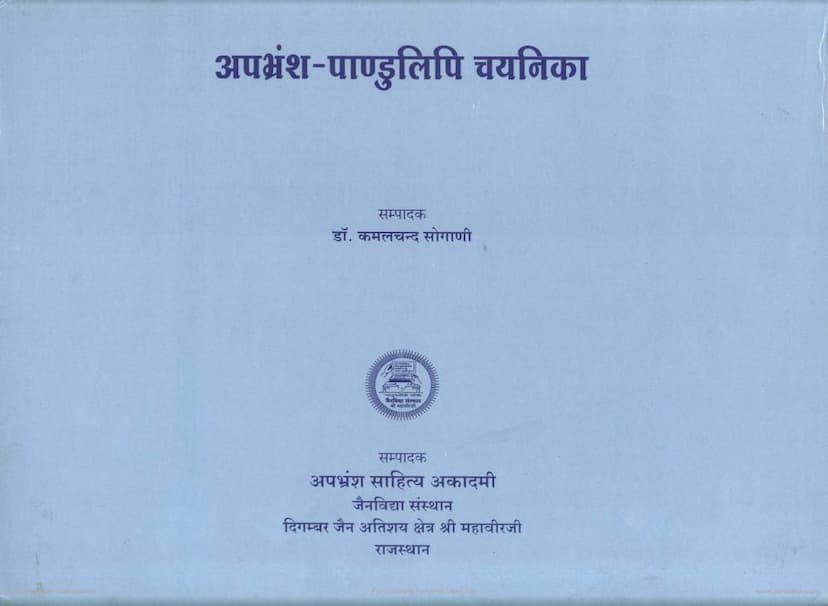Apbhramsa Pandulipi Chayanika
Added to library: September 1, 2025

Summary
This document is the Apbhramsa Pandulipi Chayanika (Collection of Apabhramsa Manuscripts), edited by Dr. Kamalchand Sogani and published by the Apabhramsa Sahitya Academy. The book is dedicated to the memory of Pandit Chain sukhdasji Vyaytirtha, a rescuer of ancient manuscripts.
The preface highlights the importance of manuscripts in preserving India's cultural and literary heritage, especially before the advent of printing. It notes that manuscripts were often copied multiple times and distributed, leading to their presence in various locations. The preface laments the decline in the ability to read manuscripts, particularly in the Apabhramsa language, emphasizing the need to revive it. The book aims to address this by providing selected Apabhramsa poetic passages along with their modern transliterations, enabling students to learn manuscript reading and practice it. It also introduces manuscript repositories in Rajasthan where Prakrit and Apabhramsa manuscripts are available. The text includes an alphabet chart for Apabhramsa manuscripts, prepared by the late Pandit Bhanwarlalji Polyaka.
The book contains selected passages from several important Apabhramsa literary works, including:
- Mahapurana (Texts 1-3)
- Sudansana Charita (Texts 4-5)
- Paumachariu (Texts 6-10)
- Jambuswami Charita (Text 11)
- Karkanda Charita (Text 12)
- Dhanna Kumar Charita (Text 13)
The latter part of the document provides detailed information about various Jain manuscript libraries in Rajasthan (Jaipur, Nagaur, Jaisalmer, Deeg, Todaraisingh, Udaipur, Baswa, Karauli, Dausa). It lists significant Apabhramsa and Prakrit manuscripts found in these libraries, including their approximate dates (Samvat). The appendix section details the contents of the Jainvidya Sansthan, Jaipur; Bhattarkiya Granth Bhandar, Nagaur; and Jinbhadrasuri Gyan Bhandar, Jaisalmer, further enumerating the numerous Apabhramsa and Prakrit works available in these collections.
The latter pages of the document (from page 90 onwards) provide the actual transliterated text of selected passages from the manuscripts, along with the manuscript script itself. The transliteration is presented as a literal rendering intended to help students learn to recognize and read Apabhramsa manuscript characters.